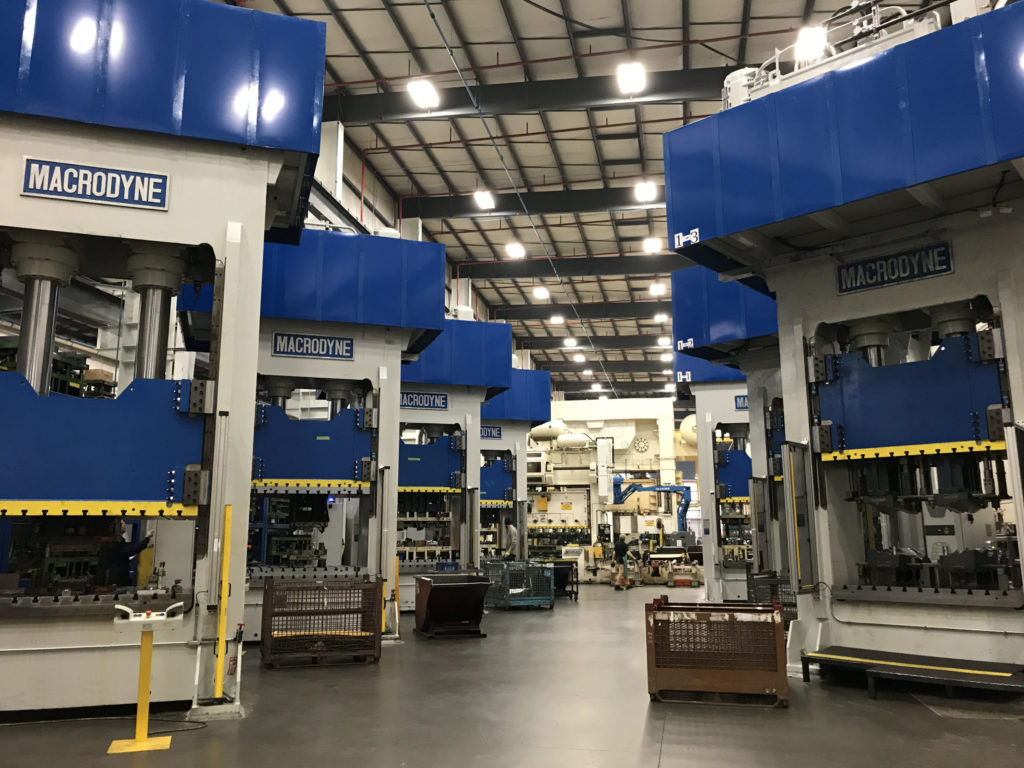Metal Marking Innovations: Elevating Production Processes for Superior Outcomes
In the world of producing processes, metal marking has long been a cornerstone technique for producing a range of accuracy elements. Nonetheless, with the relentless march of technical advancement, the landscape of steel marking is going through a considerable transformation. Innovations in this area are not just improving the efficiency and quality of production yet are additionally leading the way for new opportunities that were formerly beyond reach. As the industry welcomes these innovative developments, a redefinition of what is achievable in production is underway, encouraging premium results and setting new requirements for excellence in the field.
Development of Metal Stamping Techniques

In addition, improvements in material scientific research have brought about the development of high-strength alloys that can now be seamlessly marked right into elaborate forms, satisfying a wider variety of commercial applications. The integration of robotics and fabricated intelligence has actually better maximized the marking procedure by enhancing rate and accuracy while minimizing the threat of human error.

Influence of Advanced Materials
Have advanced materials transformed steel stamping processes considerably in the manufacturing sector? By using materials such as high-strength alloys, advanced compounds, and ingenious layers, steel marking procedures can currently create elements that are lighter, stronger, and much more long lasting than ever in the past.
These innovative materials supply superior mechanical residential or commercial properties, rust resistance, and thermal security, enabling makers to satisfy the needs of modern-day markets such as aerospace, automotive, and electronics. Furthermore, making use of advanced products in steel marking has actually facilitated the production of intricate geometries and detailed designs that were previously unattainable through conventional methods.
Furthermore, the application of sophisticated materials has resulted in minimized product waste, reduced production expenses, and shorter lead times, making metal stamping processes more cost-effective and sustainable. As technology remains to advancement, the influence of advanced materials on metal marking procedures is expected to drive further development and improve the competition of makers in the worldwide market.
Automation in Metal Stamping
The advancement of steel marking processes driven by the assimilation of innovative materials has established the phase for considerable advancements in automation within the production sector. Automation in metal stamping has actually changed manufacturing processes, enhancing performance, precision, and overall result high quality. Via the usage of robotics, sensors, and computer-controlled systems, jobs that were as soon as manual and time-consuming can currently be carried out with exceptional speed and accuracy.
Automation in metal marking not only increases production rates yet also makes certain consistency in the manufacturing procedure. By minimizing human treatment, the risk of mistakes is substantially lowered, resulting in higher levels of product uniformity and dependability. Additionally, automation enables suppliers to undertake complicated stamping jobs that would be difficult or impractical to attain manually.
Furthermore, automation in metal marking adds to a safer working environment by lowering the need for employees to take part in repeated or unsafe tasks - Metal Stamping. This change towards automation not only improves performance but likewise leads the you can try here way for the future of manufacturing, where modern technology plays a central role in driving operational excellence
Quality Assurance and Examination Systems
With a concentrate on precision and dependability, quality assurance and assessment systems play an important duty in making certain item quality in steel stamping processes. These systems are created to keep track of every phase of production, from product evaluation to the end product, to assure that all parts meet the required standards. By applying sophisticated technologies such as optical evaluation systems, coordinate gauging makers (CMM), and automated determining tools, suppliers can identify also the tiniest inconsistencies in measurements, surface quality, and overall integrity of stamped components.

Sustainability Practices in Metal Stamping
Structure upon the structure of accuracy and reliability established via top quality control and examination systems, the assimilation of sustainable methods in steel marking procedures is progressively ending up being a prime focus for manufacturers looking for to minimize environmental influence and maximize resource utilization. Sustainability techniques in steel stamping include a variety of use this link campaigns focused on decreasing waste generation, energy usage, and greenhouse gas discharges throughout the production process.
One trick element of sustainability in metal marking is the adoption of green materials and technologies that advertise recyclability and waste reduction. By utilizing recycled products and executing energy-efficient equipment, manufacturers can reduce their carbon footprint and add to a more lasting production cycle. In addition, enhancing production processes to lessen product waste and energy use not just profits the setting but also causes cost savings for businesses in the future.
Additionally, the execution of sustainable techniques in metal stamping can boost brand online reputation and charm to environmentally mindful customers. As sustainability proceeds to gain relevance in the manufacturing market, incorporating green initiatives right into metal marking procedures is vital for lasting success and competitiveness in the marketplace.
Conclusion
Finally, metal stamping methods have actually considerably progressed with time, incorporating sophisticated materials and automation to improve producing procedures. Quality assurance and inspection systems play a critical duty in making sure premium outcomes, while sustainability practices important link are increasingly being executed to minimize environmental effect. These advancements in steel marking have actually changed the industry, resulting in extra lasting and reliable manufacturing approaches for numerous markets.
Steel marking, as soon as a handbook and labor-intensive procedure, has actually changed right into an extremely automated and innovative approach of forming metal sheets right into numerous kinds and styles.Have innovative products transformed metal stamping processes significantly in the production sector? By making use of products such as high-strength alloys, progressed composites, and innovative finishings, metal stamping processes can currently generate elements that are lighter, stronger, and more sturdy than ever previously.
The advancement of steel marking processes driven by the assimilation of innovative materials has actually established the stage for significant advancements in automation within the production market.In conclusion, steel stamping techniques have actually substantially developed over time, incorporating advanced products and automation to enhance manufacturing procedures.